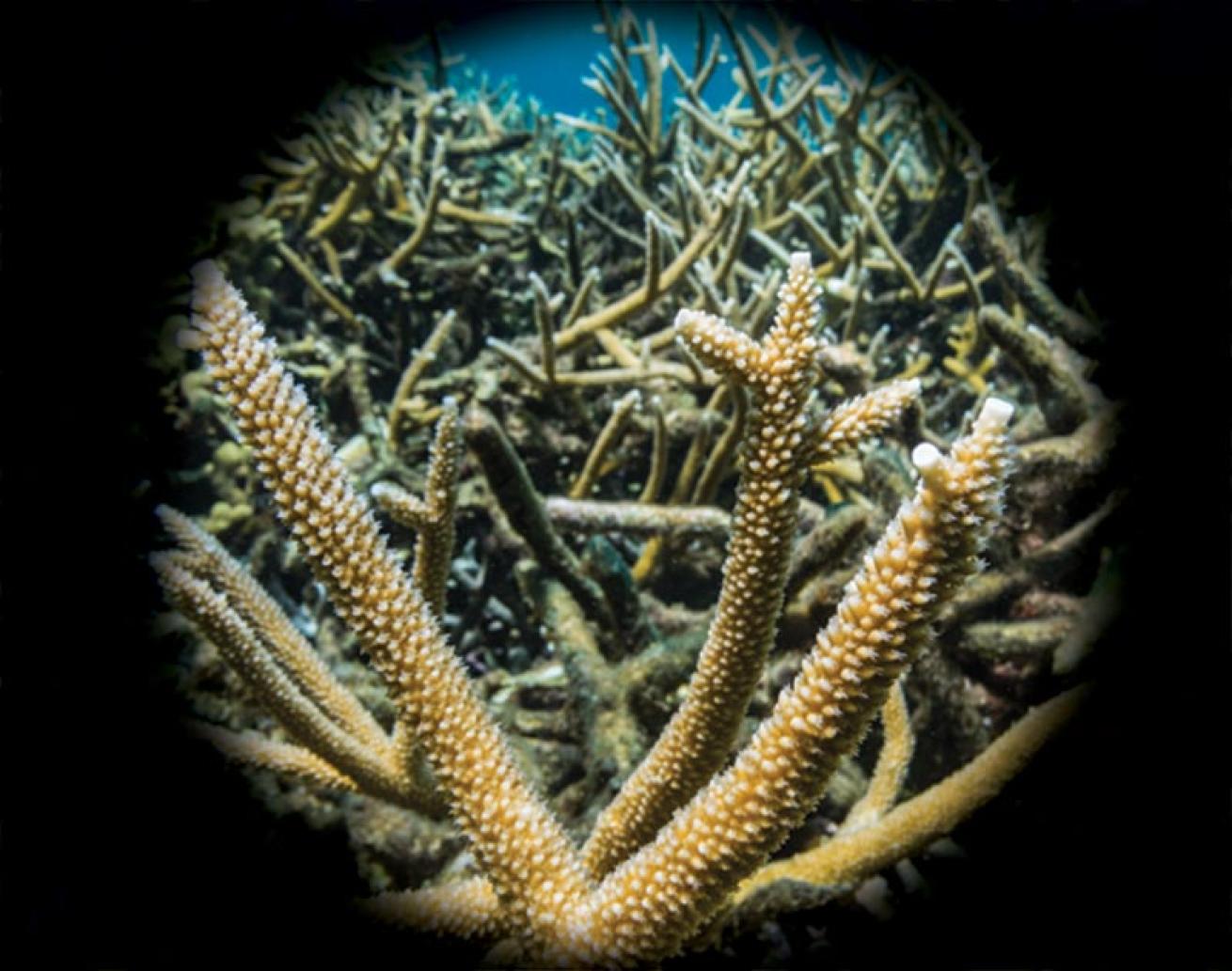How to Identify Staghorn Coral

Nicole HelgasonLearn how to identify staghorn coral, Acropora cervicornis, with this marine-ID guide.
Acropora cervicornis grows into cylindrical branches with a large corallite at the tip of each branch. This is called the axial corallite and is a key feature that distinguishes Acropora from other corals.
If you can identify a single large corallite at the tip of a branch, you found an Acropora.
Pointed branches of Acropora cervicornis rise from the reef like antlers, and its common name is the staghorn coral. As the colony grows, the staghorn branches create a three-dimensional lattice where baby fish can easily hide and avoid larger predators.
As a staghorn coral reaches toward the sun, the tissue from its lower branches dies off as new tissue is growing up. The structure of the older branches below remains and becomes a fortress for juvenile fish. In a healthy, mature staghorn reef, the top 12 inches or so of the reef is living coral tissue, but below is a labyrinth of branches several generations deep.
Acropora cervicornis is the only Caribbean species that grows into sturdy branches capable of creating a complex network of habitat. But while the branches are strong, they can be damaged by heavy anchors, storms or even a diver’s stray fin kick.
- Colonies can grow quite large, with branches up to 6 feet in length with a diameter up to 3 inches. Healthy stands of staghorn coral can contain hundreds of colonies that grow into fields. This coral prefers the upper sun-drenched limits of the reef.










